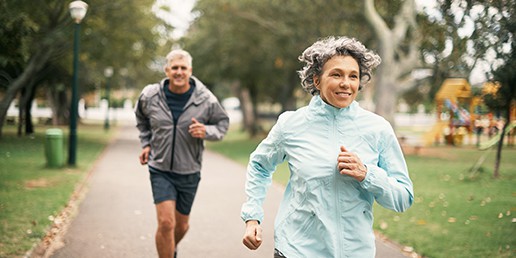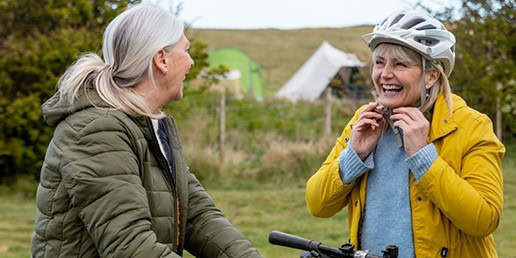Adult Health
Accidents and Injuries (Adults)
Some links on this page have been colour coded to make it easier to find the information you need:
How can you decide what to do after an accident or injury?
There are effectively 4 options following an accident or injury
- Self-care with or without the support of your local pharmacist
- Attending an urgent treatment centre (minor injuries unit)
- Assessment at your GP practice
- Attending an accident and emergency department (which may include the option of an eye casualty)
The different options are based on what actions are required with different conditions. Many common conditions are covered on this page.
Always remember you can contact 111 if you are not sure what to do and they will be able to guide you.
Pharmacist
A pharmacist can give advice and offer a range of medication including simple pain killers (tablets and creams), antihistamine tablets, creams (such as antiseptics, anti-inflammatory and burn creams), and antibiotics for eye infections (chloramphenicol). A pharmacist can also advise if a GP appointment is worthwhile.
Further information can be found under
Urgent treatment centre
An urgent treatment centre (Minor injuries unit) can take simple x rays and so they can deal with minor fractures (broken bones) and they can prescribe stronger pain killers and antibiotics. However, they cannot normally arrange a CT scan or blood tests and do not normally have access to any specialist doctors.
Further information can be found under
GP practice
A GP can assess if a condition is more serious and might require an assessment in A&E or stronger pain killers (e.g., a whiplash injury).
Accident and Emergency (A&E)
Accident and Emergency have access to all the necessary investigations and access to most specialist doctors. Though for eye emergencies it is worth ringing 111 (or 999 if an emergency) so you get to the right eye casualty available at that time of day.
Further information can be found under
111 can guide you to the correct service
Always remember that 111 can guide you to the closest unit near your location and also confirm where is the best place to go if you are not sure.
NHS 111
If you are not sure which service to attend following an accident or injury then 111 can advise you
As the NHS suggests
NHS 111 can help if you think you need medical help right now
Some common accidents and injuries
For each of the accidents and injuries covered, the relevant article included below explains when
- you can self-treat (or get advice and treatment from a pharmacist),
- might need an X-ray (and possible treatment of a less serious fracture) done at an urgent treatment centre,
- or require a full assessment and treatment of a serious fracture or a serious injury. When you should see a GP or attend A&E directly.
Remember if after reading the linked articles below you are still not sure you can contact 111 to guide you.
MINOR INJURIES OFTEN TREATED BY SELF CARE BUT OCCASIONALLY NEED A&E
Options for the following conditions include Self-care (with or without Pharmacy support), Urgent treatment centre and Accident and Emergency as choices which is explained further in these articles.
From the NHS
- sprains and strain Sprains and strains – NHS
- Cuts and grazes Cuts and grazes – NHS
- Insect bites and stings Insect bites and stings – NHS
- Burns and scalds Burns and scalds – NHS
- Animal and Human bitesAnimal and human bites – NHS
- Broken or bruised ribs Broken or bruised ribs – NHS
- Broken nose Broken nose – NHS
From the NHS and Patient info
Whiplash Neck Sprain
Some further information on Self-Care
From Patient info
Recovering from a sports injury Recovering from a sports injury | Patient
From NICE
Injuries (includes sprains and strains, bites, nose bleeds, burns and scalds) Injuries | Specialities | CKS | NICE
BROKEN BONES TREATED IN AN URGENT TREATMENT CENTRE OR A&E
Options for the following conditions includes Urgent treatment centre and Accident and Emergency as choices
Only minor fractures (broken bones) or dislocations should be treated in Urgent treatment centres (Minor injuries units)
From the NHS
How do I know if I have broken a bone? How do I know if I’ve broken a bone? – NHS
The following fractures might be treated in an urgent care centre (minor injuries units) but there are certain situations when you should attend A&E as explained in these articles:
- Broken collarbone Broken collarbone – NHS
- Broken finger or thumb Broken finger or thumb – NHS
- Broken ankle Broken ankle – NHS
- Broken toe Broken toe – NHS
All the following conditions should be seen in Accident and Emergency
Serious broken bones
Certain fractures should always be treated in A&E which is explained below
As the NHS suggests
“Always call 999 for very severe suspected breaks, such as a broken neck or back.”
“Go to your nearest A&E for a broken arm or leg. Call 999 for an ambulance if the injury to the leg seems severe or you’re not able to get to A&E quickly.”
- How do I know if I have broken a bone? How do I know if I’ve broken a bone? – NHS
- Dislocated shoulder Dislocated shoulder – NHS
- Broken arm or wrist Broken arm or wrist – NHS
- Hip fracture Hip fracture – NHS
- Broken leg Broken leg – NHS
HEAD INJURY (USUALLY NOT SERIOUS BUT CAN REQUIRE A&E)
Injuries which include certain features should also be assessed in A&E which is elaborated on here:
From the NHS, Patient info and NICE
Head injury and concussion
- Head injury and concussion – NHS
- Head Injury Advice | Patient
- Head injury | Health topics A to Z | CKS | NICE
From the NHS
Subdural haematoma Subdural haematoma – NHS
BURNS (ARE NOT USUALLY SERIOUS BUT CAN REQUIRE A&E)
As the NHS suggests
“Go to a hospital accident and emergency (A&E) department for:
- large or deep burns bigger than the affected person’s hand
- burns of any size that cause white or charred skin
- burns on the face, hands, arms, feet, legs or genitals that cause blisters
- all chemical and electrical burns”
Burns and scalds Burns and scalds – NHS
Acid and chemical burns
As the NHS suggests
Call 999 and ask for urgent help for the following
Acid and chemical burns Acid and chemical burns – NHS
EYE INJURIES -USUALLY NOT SERIOUS BUT CAN REQUIRE AN EYE CASUALTY (A&E)
Though as explained in the article minor eye injuries can be treated at home, any serious injury (including high speed injuries with power tools, hammers and lawn mowers) should be assessed in an eye casualty. Call 999 for urgent help (remember 111 can tell you where your closest eye casualty is and confirm it is open particularly in the evening or weekends).
Eye injuries Eye injuries – NHS
ANAPHYLAXIS (CALL 999)
Anaphylaxis (severe allergic reaction) may occur after an insect bite. Call 999 for an ambulance immediately
From the NHS and Patient info
Anaphylaxis
POISONING (MAY NEED A&E)
As the NHS suggest
“If they’re showing signs of being seriously ill, dial 999 to request an ambulance or take them to your local A&E department.
Symptoms associated with serious poisoning include:
- being sick
- dizziness
- sudden, noticeable heartbeats (palpitations)
- breathing difficulties
- uncontrollable restlessness or agitation
- seizures (fits)
- drowsiness or loss of consciousness”
Poisoning – Treatment – NHS
From the NHS, Patient info and NICE
Poisoning
How can you give simple first aid?
Information on first Aid to help treat some common injuries and accidents is included under
How can you reduce the risk of accidents?
For information on reducing the risk of accidents for all ages see under
For detailed information on reducing the risk of falls, particularly in older people, see under




